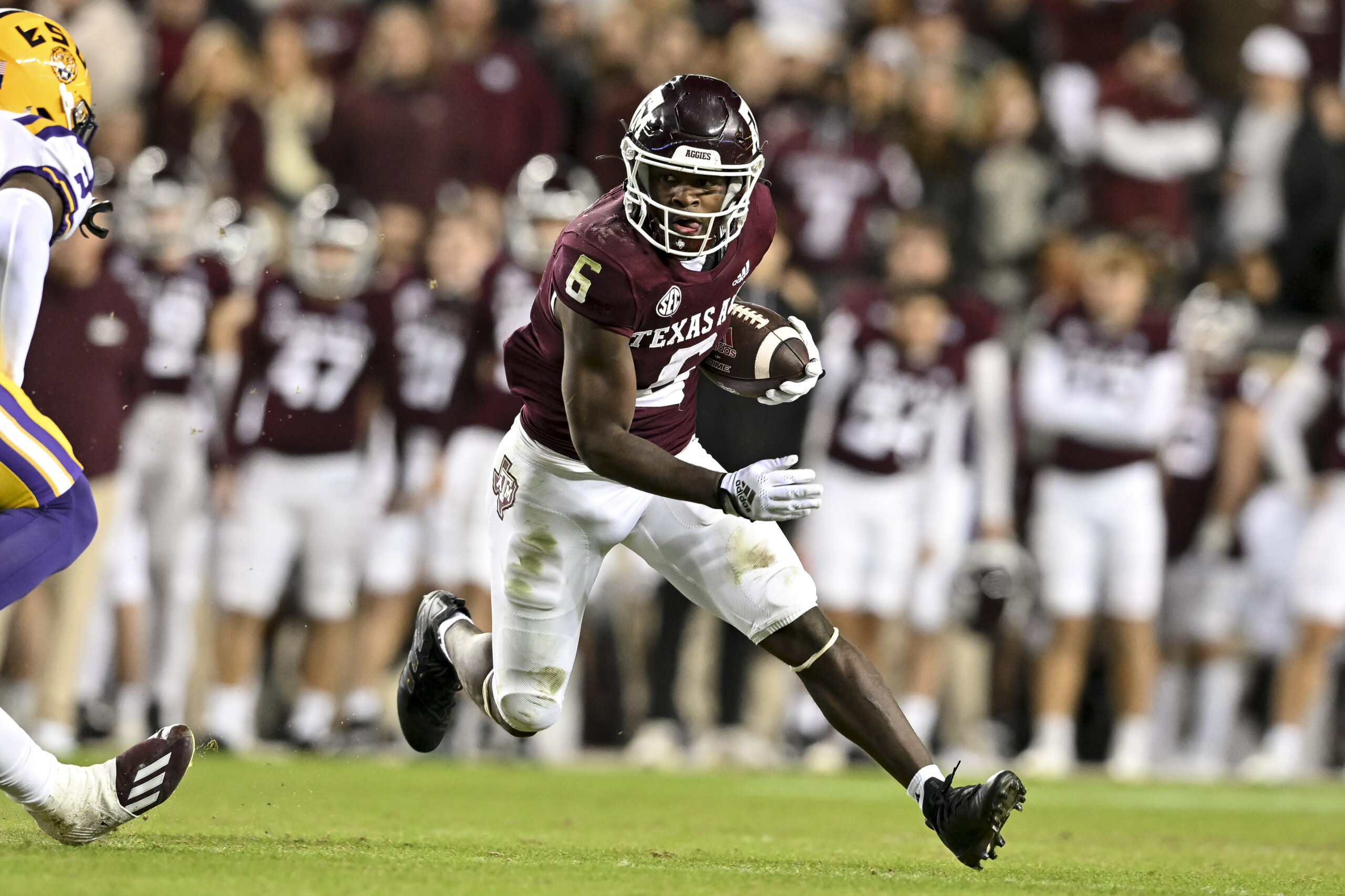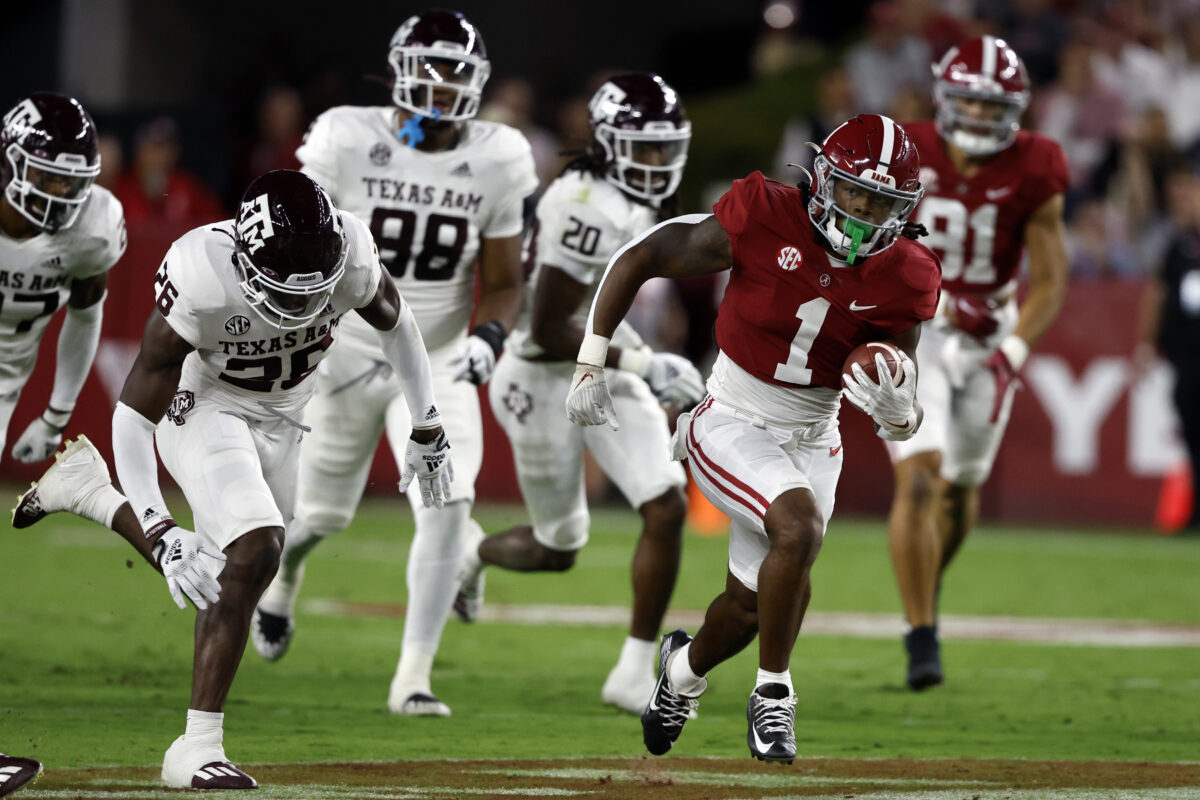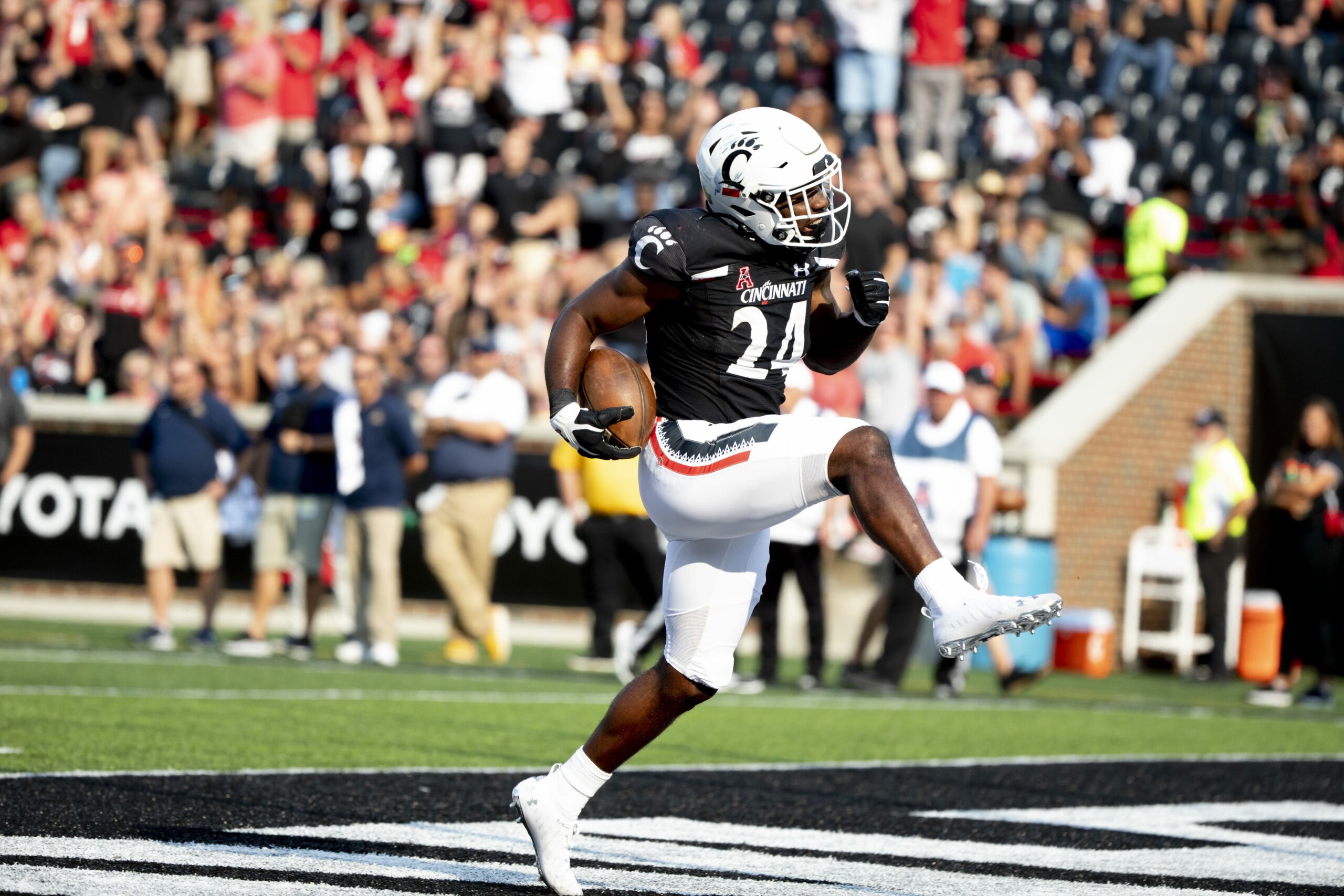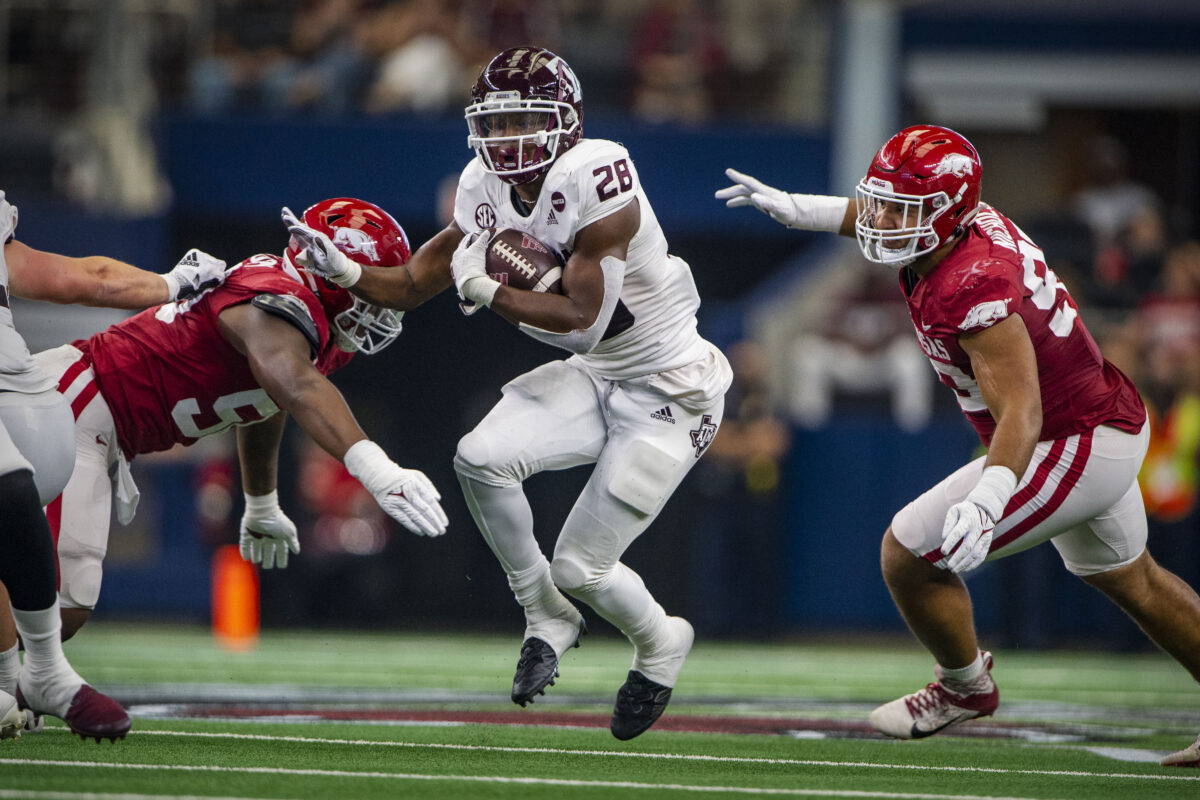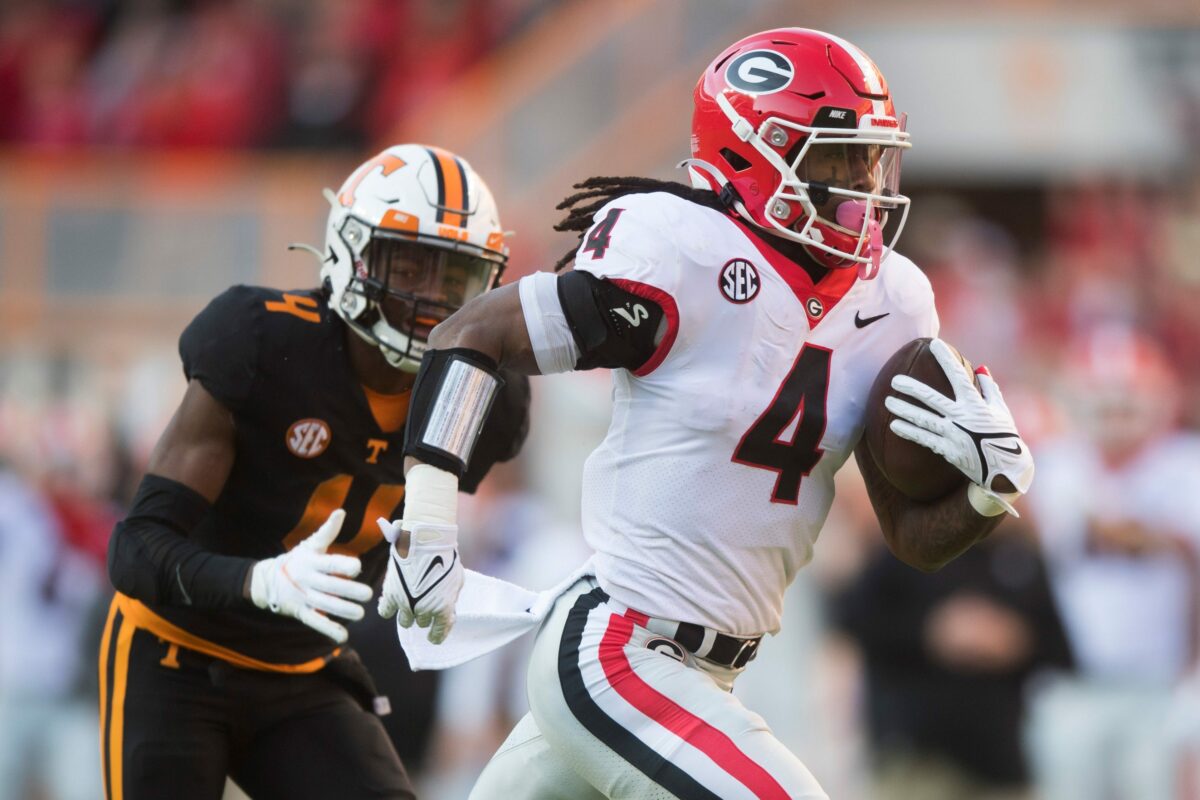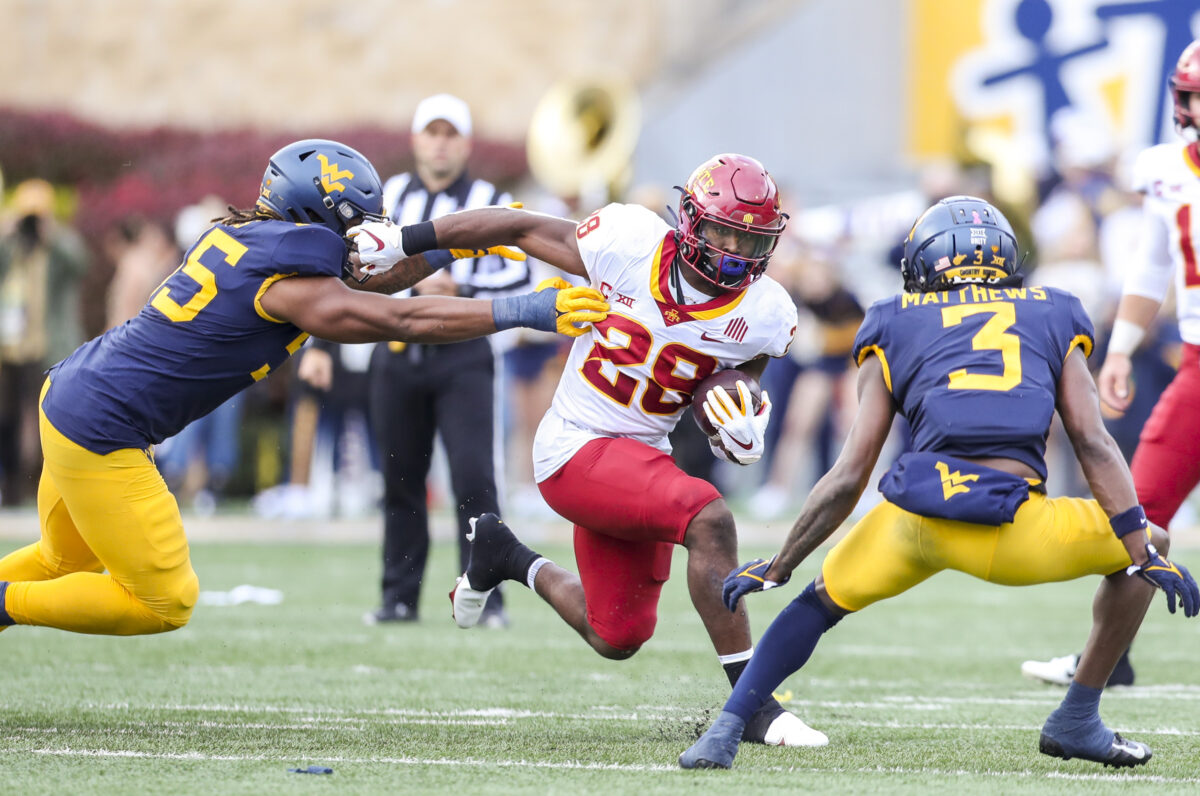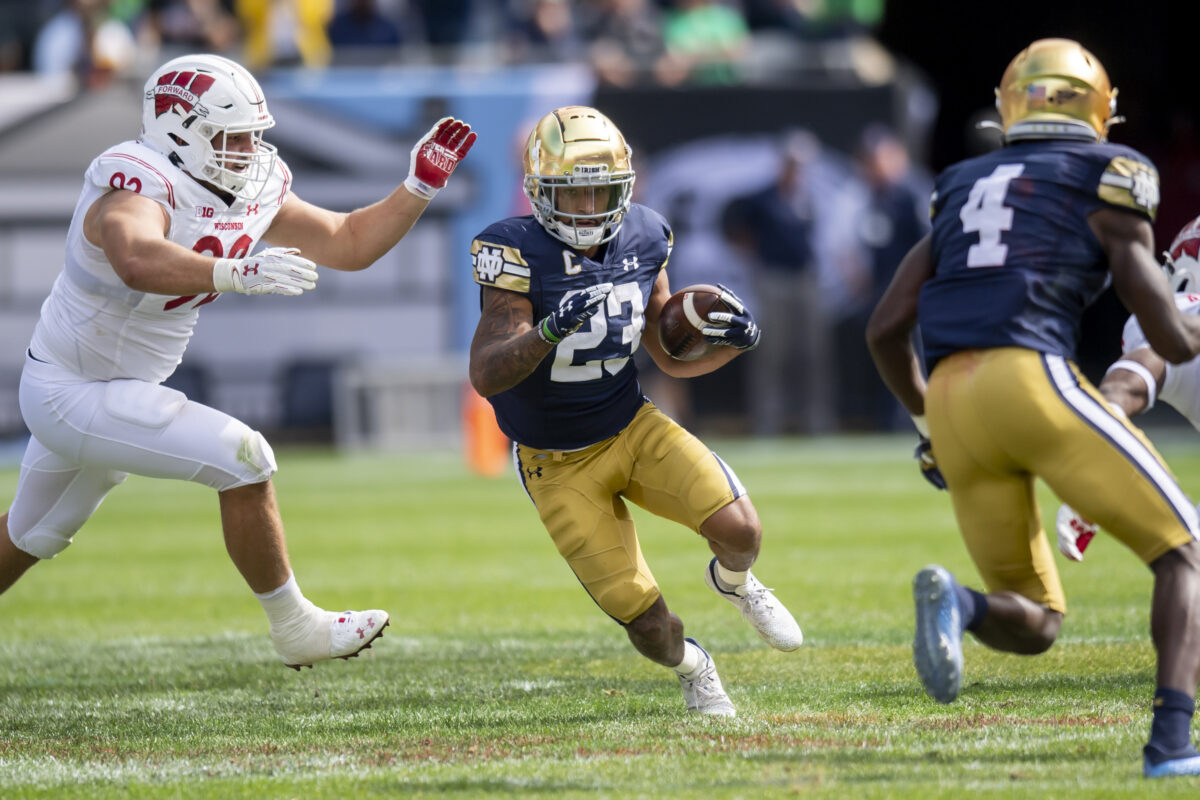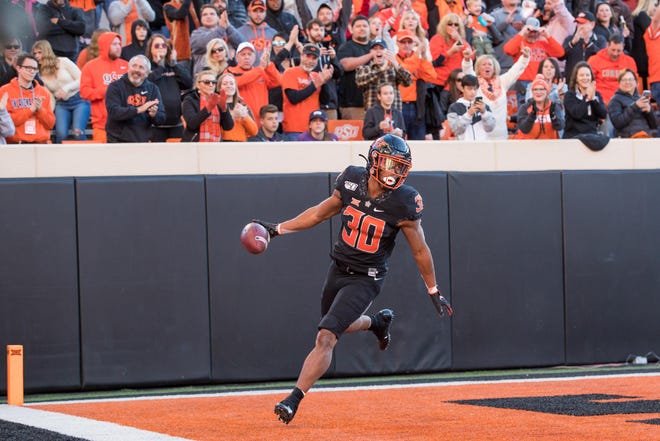Devon Achane left high school in Texas with 2,097 rushing yards and 39 touchdowns, which helped him to land with the Aggies. He played in eight games as a freshman behind the starter Isaiah Spiller with an insane 8.5 yards per carry on his 43 runs. He was the MVP of the 2021 Orange Bowl when he ran for 140 yards and two scores that included a 76-yard touchdown run to close out the 41-27 win over North Carolina.
Achane was elevated to a more even sharing with Spiller in 2021 when he gained 910 yards on 130 runs versus 1,011 yards on 179 carries for Spiller. Again, Achane led the Aggies with a 7.0-yard rushing average and even bested Spiller with nine rushing touchdowns versus his six.
With Spiller gone to the NFL last year, Achane became the unquestioned starter for 2022 when he ran 196 times for 1,102 yards and eight scores. No other back carried more than 36 times. Spiller also added a career-high 36 catches for 196 yards and three more scores as a receiver. While the Aggies missed a chance for a bowl game with a 5-7 record, Achane’s final college game saw him run for 215 yards on 38 carries with two scores versus LSU.
Height: 5-9
Weight: 188 pounds
40 time: 4.32 seconds
He gained All-SEC honors as a running back last year and also contributed to their track program thanks to his jaw-dropping speed. His size will likely cast him as a complementary addition to an NFL backfield, but history already says the speedster doesn’t need a high volume of touches to be a game-changer.
Table: Player NCAA stats (2020-22)
| Year | School | Games | Runs | Yards | Avg. | TD | Catch | Yards | TD |
|---|---|---|---|---|---|---|---|---|---|
| 2020 | Texas A&M | 6 | 43 | 364 | 8.5 | 4 | 5 | 97 | 1 |
| 2021 | Texas A&M | 12 | 130 | 910 | 7.0 | 9 | 24 | 261 | 1 |
| 2022 | Texas A&M | 10 | 196 | 1102 | 5.6 | 8 | 36 | 196 | 3 |
Pros
- Sprinter speed outruns pursuit when he breaks into the open
- Elite initial burst and reaches top speed quickly
- Offers equally dangerous value split out into the slot as a receiver
- Tough inside runner for his size – keeps legs churning
- Offers special teams help as a returner
- Soft hands doubles his threat as a receiver
- One of the top playmakers in this draft
- Patient rusher waiting for openings
- Great vision couples with instant cutting in traffic
- Plays bigger than his frame suggests
Cons
- Size will be a factor with inside rushing or high-volume touches
- Fearless player could impact his durability
- Tends to bounce runs outside and aim for the big play
- Could struggle in pass protection against bigger rushers
- Often tackled on first contact
Fantasy outlook
There’s no question that Achane has been a play-maker and explosive addition to a backfield. His speed alone merits attention, but he’s much more than just a speedy straight-line player. Achane is very tough to find in traffic and almost impossible to catch when he breaks into the open. His size will be his biggest – and maybe only – limitation to scouts. At 188 pounds, he would be lighter than any other running back of any note last year.
Even James Cook (190 pounds) was a second-round pick last year, and Achane is expected to be a Day 2 selection. In today’s NFL, he can immediately upgrade a backfield even as a complementary player and the “lightning” to another “thunder”. Achane always plays bigger than his size and isn’t limited to just sweeps and screens. With the right offensive line and in an offense that passes well enough to prevent opponents from stacking the line, Achane could still matter as a complete runner.
Achane should also see work as a returner, especially as a rookie and while he learns the ropes. He averaged 30.7-yards on his 22 kick returns for the Aggies that included a 96-yard touchdown against Alabama in 2021. He won’t be a workhorse runner in the NFL, but Achane offers a very dangerous and explosive addition to any team, and can contribute as a runner, receiver and returner. He’ll be drafted by a team looking to upgrade their backfield immediately with a spark-inducing blur whenever he breaks into the open.
